MQ Multiquip ST45HRM User manual
- Category
- Trash Compactor
- Type
- User manual
This manual is also suitable for

OPERATIONS & PARTS MANUAL
Revision #4 (07/16/04)
THIS MANUAL MUST ACCOMPANY
THE EQUIPMENT AT ALL TIMES.
SERIES
MODEL ST-45HRM
STRUCTURAL CONCRETE PUMP
(HATZ DIESEL ENGINE)
FINAL REVISION

PAGE 2 — MAYCO ST-45HRM PUMP — OPERATION & PARTS MANUAL — REV. #4 (07/16/04)
Proposition 65 Warning

MAYCO ST-45HRM PUMP — OPERATION & PARTS MANUAL — REV. #4 (07/16/04) — PAGE 3
HERE'S HOW TO GET HELP
HERE'S HOW TO GET HELP
PLEASE HAVE THE MODEL AND SERIAL
NUMBER
ON-HAND
WHEN CALLING
MULTIQUIP CORPORATE OFFICE
18910 Wilmington Ave. 800-421-1244
Carson, CA 90746
FAX:
310-537-3927
Email: mq@multiquip.com
Internet: www.multiquip.com
PARTS DEPARTMENT
800-427-1244
FAX:
800-672-7877
310-537-3700
FAX:
310-637-3284
MAYCO PARTS
800-306-2926
FAX:
800-672-7877
310-537-3700
FAX:
310-637-3284
SERVICE DEPARTMENT
800-421-1244
FAX:
310-537-4259
310-537-3700
TECHNICAL ASSISTANCE
800-478-1244
FAX:
310-631-5032
WARRANTY DEPARTMENT
800-421-1244,
EXT.
279
FAX:
310-537-1173
310-537-3700,
EXT.
279
© COPYRIGHT 2004, MULTIQUIP INC.
Multiquip Inc, the MQ logo and the Mayco logo are registered trademarks of Multiquip Inc. and may not be used, reproduced, or
altered without written permission. All other trademarks are the property of thier respective owners and used with permission.
This manual
MUST accompany the equipment at all times. This manual is considered a permanent part of the equipment and
should remain with the unit if resold.
The information and specifications included in this publication were in effect at the time of approval for printing. Illustrations are
based on the
Mayco ST-45HRM w/ Hatz Diesel Engine.
Illustrations, descriptions, references and technical data contained in this
manual are for guidance only and may not be considered as binding. Multiquip Inc. reserves the right to discontinue or change
specifications, design or the information published in this publication at any time without notice and without incurring any obligations.
To find the latest revision of this
publication, visit our website at:
www.multiquip.com

PAGE 4 — MAYCO ST-45HRM PUMP — OPERATION & PARTS MANUAL — REV. #4 (07/16/04)
TABLE OF CONTENTS
Specification and part
number are subject to
change without notice.
NOTE
MAYCO ST-45HRM
STRUCTURAL CONCRETE
PUMP
Proposition 65 Warning .............................................2
Here’s how To Get Help.............................................3
Table of Contents ......................................................4
Parts Ordering Procedures ...................................... 5
Pump Specifications ..................................................6
Engine Specifications ................................................7
Dimensions .............................................................. 8
Safety Message Alert Symbols .......................... 9-10
Rules for Safe Operation ................................... 11-13
Operation and Safety Decals ............................ 14-15
Important Hand Signals ..........................................16
General Information .......................................... 17-18
How it Works............................................................19
Pump Components ........................................... 20-21
Control Box Components ........................................22
Engine Components ...............................................23
Operating Procedures....................................... 24-28
Inspection .......................................................... 29-31
Initial Start-Up Procedure ................................. 32-35
Towing Guidelines ............................................. 36-37
Trailer Safety Guidelines ................................... 38-40
Towing Information ............................................ 41-42
Wiring Diagram (Tail Lights) ....................................43
Maintenance (Pump) ........................................ 44-52
Hydraulic Hose Connections ............................. 54-56
Manifold Port Locations...........................................57
Appendix — Concrete Mix Information ............. 58-59
Appendix — Slump Test Procedure ........................60
Troubleshooting (Engine) ........................................61
Troubleshooting (Hydraulic System) .......................62
Troubleshooting (Electrical System) .......................63
Troubleshooting (Brake System).............................64
PARTS ILLUSTRATIONS
Explanation Of Code In Remarks Column ..............64
Suggested Spare Parts ...........................................65
Appendix — Recommended
Shotcrete System ............................... 66
Appendix — Recommended
Shotcrete Accessories ........................ 68
Decal Placement ................................................ 70-71
Axle Assembly .................................................... 74-75
Brakeline Assembly ............................................76-77
Hopper Assembly ...............................................78-79
Hopper Attachment Assembly ...........................80-81
Hopper Interior Assembly ..................................82-83
Shuttle Cylinder Assembly .................................84-85
Fuel and Hydraulic Tank Assembly ....................86-89
Front Cover Assembly........................................90-91
Heat Exchanger Assembly .................................92-93
Engine and Frame Assembly .............................94-96
Throttle and Water Filter Assembly ....................96-97
Hydraulic Pump Assembly .................................98-99
Lubrication Pistons Assembly ........................100-101
Electrical System Assembly ...........................102-103
Accumulator Assembly...................................104-105
Manifold Assembly .........................................106-107
Remixer Control Assembly .............................108-109
Battery Assembly ...........................................110-111
Lubrication Panel ...........................................112-113
Taillight Assembly ...........................................114-115
Control Box Interior Door Assembly ...............116-117
Control Box Mounting Assembly ...................118-119
Control Box Assembly ...................................120-121
Control Box Door Wiring Diagram ......................... 122
Control Box Interior Wiring Diagram ..................... 123
Terminal Block Wiring Diagram ............................. 124
Control Box Electrical Schematic ...................125-126
Interconnect Hydraulic Control Box ...................... 127
Hydraulic Diagram ............................................... 128
Optional Radio Control.......................................... 129
Terms and Conditions Of Sale — Parts ................ 130
Mayco Pump Warranty .......................................... 131

MAYCO ST-45HRM PUMP — OPERATION & PARTS MANUAL — REV. #4 (07/16/04) — PAGE 5
When ordering parts,
please supply the following information:
❒❒
❒❒
❒ Dealer account number
❒❒
❒❒
❒ Dealer name and address
❒❒
❒❒
❒ Shipping address (if different than billing address)
❒❒
❒❒
❒ Return fax number
❒❒
❒❒
❒ Applicable model number
❒❒
❒❒
❒ Quantity, part number and description of each part
❒❒
❒❒
❒ Specify preferred method of shipment:
✓ FedEx or UPS Ground
✓ FedEx or UPS Second Day or Third Day
✓ FedEx or UPS Next Day
✓ Federal Express Priority One
✓ DHL
✓ Tr u ck
Direct TOLL-FREE access
to our Parts Department:
Toll-free nationwide — 800-427-1244
Toll-free FAX — 800-6-PARTS-7
(800/672-7877)
MULTIQUIP INC.
18910 WILMINGTON AVENUE
POST OFFICE BOX 6254
CARSON, CALIFORNIA 90749
310-537-3700 • 800-421-1244
FAX: 310-537-3927
E-MAIL: [email protected]
INTERNET: www.multiquip.com
Here’s how to get help...
Please have the model and serial number
on hand when calling.
MULTIQUIP CORPORATE OFFICE
18910 Wilmington Ave. 800-421-1244
Carson, CA 90746
FAX:
310-537-3927
Email: mq@multiquip.com
Internet: www.multiquip.com
PARTS DEPARTMENT
800-427-1244
FAX:
800-672-7877
310-537-3700
FAX:
310-637-3284
MAYCO PARTS
800-306-2926
FAX:
800-672-7877
310-537-3700
FAX:
310-637-3284
SERVICE DEPARTMENT
800-421-1244
FAX:
310-537-4259
310-537-3700
TECHNICAL ASSISTANCE
800-478-1244
FAX:
310-631-5032
WARRANTY DEPARTMENT
800-421-1244,
EXT.
279
FAX:
310-537-1173
310-537-3700,
EXT.
279
PARTS ORDERING PROCEDURES
Note: Unless otherwise indicated by customer, all
orders are treated as “Standard Orders”, and will
ship within 24 hours. We will make every effort to ship
“Air Shipments” the same day that the order is
received, if prior to 2PM west coast time. “Stock
Orders” must be so noted on fax or web forms.
Extra Discounts!
All parts orders which include complete part numbers and
are received by our automated web parts order system, or
by fax qualify for the following extra discounts:
Ordered Standard Stock orders
via orders ($750 list and above)
Fax 3% 10%
Web 5% 10%
Special freight allowances
when you order 10 or more
line items via Web or Fax!**
FedEx Ground Service
at no charge for freight
No other allowances on freight shipped by any other carrier.
**Common nuts, bolts and washers (all items under $1.00
list price) do not count towards the 10+ line items.
Place Your Parts Order Via Web or Fax
For Even More Savings!
(Domestic USA Dealers Only)
NOTE: DISCOUNTS ARE SUBJECT TO CHANGE

PAGE 6 — MAYCO ST-45HRM PUMP — OPERATION & PARTS MANUAL — REV. #4 (07/16/04)
ST-45 PUMP — PUMP SPECIFICATIONS
snoitacificepSpmuP54-TS.1elbaT
dohteMgnipmuPnotsiPgnitacorpiceR
etaRgnipmuP*ruohrep.sdy.uc54otpU
eziSetagerggAmumixaM)mm83(sunim.ni2/1-1
t
hgieHgnipmuPlacitreV)m67(.tf052fossecxEotpU
ecnatsiDgnipmuPlatnoziroH*)m503(.tf0001
yticapaCxoBnoitacirbu
LrednilyC)sretiL5.62(snollaG7
yticapaCdiulFciluardyH)sretiL912(snollaG85
yticapaCknaTleuF)sretiL67(snollaG02
yticapaCreppoHreximerver/dwflanoitpohtiw.tf.uc01
esoHlairetaM
.aid.ni5,.ni4,.ni3
)mm721,mm6.101,mm2.67(
)elbac.tf52(lortnoCetomeRlanoitpo
snoisnemiD61egaPeeS
)sdiulfhtiw(thgieW)gk472,9(.sbl602,4
)gnippihs/yrd(th
gieW)gk809,8(.sbl040,4
eziSeriT)mm653xmm781(.ni41x.ni53.7
snotitidnocetisbojdnadesuezisenil,pmuls,ngisedximnognidnepedyravlliwtuptuoemuloV*

MAYCO ST-45HRM PUMP — OPERATION & PARTS MANUAL — REV. #4 (07/16/04) — PAGE 7
ST-45 PUMP — ENGINE SPECIFICATIONS
snoitacificepSenignE.2elbaT
enignE
ledoMENIGNELESEIDPH7514M3ZTAH
ekortSXeroB
.ni31.4x.ni20.4
)mm501x201(
oitaRnoisserpmoC7.81
tnemecalpsi
D)cc375,2(.uc751
yticapaCliOebuL
niM/xaM
.tq4.5/.tq1.9
)L1.5/L6.8(
deepSenignE
eldIlluF
001±mpr578
epyTyrettaB)
hA341/88(V21
noitacirbuLenignE
)edarGliO(03-W01EAS
)ssalCecivreS(FSroGS
dohteMgnitratStratScirtcelE
thgieWteNyrD)gk552(sbl265

PAGE 8 — MAYCO ST-45HRM PUMP — OPERATION & PARTS MANUAL — REV. #4 (07/16/04)
ST-45 PUMP — DIMENSIONS
SNOISNEMID.3ELBAT
.FERSNOISNEMID
A).mc3.411(.ni54
B).mc5.114(.ni261
C).mc16(.ni42
D).mc4.581(.ni37
E).mc2.271(.ni86
Figure 1. ST-45 Structural Concrete Pump Dimensions

MAYCO ST-45HRM PUMP — OPERATION & PARTS MANUAL — REV. #4 (07/16/04) — PAGE 9
Safety precautions should be followed at all times when operating
this equipment. Failure to read and understand the Safety
Messages and Operating Instructions could result in injury to
yourself and others.
FOR YOUR SAFETY AND THE SAFETY OF OTHERS!
This Owner's Manual has been
developed to provide complete
instructions for the safe and efficient
operation of the Multiquip Mayco
ST-45 Structural Concrete
pump.
Refer to the engine manufacturers
instructions for data relative to its safe
operation.
Before using this pump , ensure that the operating
individual has read and understands all instructions in this
manual.
SAFETY MESSAGE ALERT SYMBOLS
The three (3) Safety Messages shown below will inform you
about potential hazards that could injure you or others. The
Safety Messages specifically address the level of exposure to
the operator, and are preceded by one of three words: DANGER,
DANGER: You WILL be KILLED or
SERIOUSLY injured if you do not follow
directions.
WARNING: You CAN be KILLED or
SERIOUSLY injured if you do not follow
directions.
CAUTION: You CAN be injured if you
do not follow directions
HAZARD SYMBOLS
Diesel engine exhaust gases contain poisonous
carbon monoxide. This gas is colorless and
odorless, and can cause death if inhaled.
NEVER operate this equipment in a confined
area or enclosed structure that does not
provide ample free flow air.
Potential hazards associated with operation of the pump will be
referenced with Hazard Symbols which appear throughout this
manual, and will be referenced in conjunction with Safety
Message Alert Symbols.
Diesel fuel
is extremely flammable, and its
vapors can cause an explosion if ignited. DO
NOT start the engine near spilled fuel or
combustible fluids. DO NOT fill the fuel tank
while the engine is running or hot. DO NOT
overfill tank, since spilled fuel could ignite if it
comes into contact with hot engine parts or
sparks from the ignition system. Store fuel in
approved containers, in well-ventilated areas
and away from sparks and flames. NEVER
use fuel as a cleaning agent.
Explosive Fuel
Burn Hazards
Engine components can generate extreme heat.
To prevent burns, DO NOT touch these areas
while the engine is running or immediately after
operations. NEVER operate the engine with
heat shields or heat guards removed.
ST-45 PUMP — SAFETY MESSAGE ALERT SYMBOLS
Lethal Exhaust Gases
Rotating Parts
NEVER operate equipment with covers, or
guards removed. Keep
fingers
,
hands
,
hair
and clothing away from all moving parts to
prevent injury.
NOTE

PAGE 10 — MAYCO ST-45HRM PUMP — OPERATION & PARTS MANUAL — REV. #4 (07/16/04)
Accidental Starting
ALWAYS place the ON/OFF switch in the OFF
position. NEVER perform maintenance on the
unit with the ignition key in the ON position.
Respiratory Hazard
ALWAYS wear approved
respiratory
protection.
ALWAYS wear approved
eye
and
hearing
protection.
Sight and Hearing hazard
ST-45 PUMP — SAFETY MESSAGE ALERT SYMBOLS
Equipment Damage Messages
Other important messages are provided throughout this manual
to help prevent damage to your concrete pump, other property,
or the surrounding environment.
This
pump
, other property, or the
surrounding environment could
be damaged if you do not follow
instructions.
NOTE
NEVER tamper with the factory settings of the
engine governor or settings. Personal injury
and damage to the engine or equipment can
result if operating in speed ranges above
maximum allowable.
Over Speed Conditions

MAYCO ST-45HRM PUMP — OPERATION & PARTS MANUAL — REV. #4 (07/16/04) — PAGE 11
CAUTION:
Failure to follow instructions in this manual may
lead to serious injury or even
death!
This
equipment is to be operated by trained and
qualified personnel only! This equipment is
for industrial use only.
The following safety guidelines should always be used when
operating the ST-45 structural concrete ump:
GENERAL SAFETY
■
DO NOT operate or service this equipment
before reading this entire manual.
■
ALWAYS refuel in a well-ventilated area, away from sparks
and open flames.
■
NEVER
smoke
around or near the machine.
Fire or explosion could result from
fuel
vapors
, or if fuel is spilled on a
hot!
engine.
■
NEVER operate the pump in an explosive
atmosphere or near combustible materials. An explosion or
fire could result causing severe
bodily harm or even death.
■
Topping-off to filler port is dangerous, as it tends to spill fuel.
■
The engine section of this pump requires an adequate free
flow of cooling air.
NEVER
operate the pump in any enclosed
or narrow area where free
flow of the air is restricted. If
the air flow is restricted it
will cause serious damage
to the pump or engine and
may cause injury to
people. Remember the
pump's engine gives off
DEADLY
carbon monoxide
gas.
■
High Temperatures – Allow the engine to cool before adding
fuel or performing service and maintenance functions. Contact
with
hot!
components can cause serious burns.
■
ALWAYS use extreme caution when
working with flammable liquids. When
refueling, stop the engine and allow it to
cool.
■
Whenever necessary, replace nameplate, operation and
safety decals when they become difficult read.
■
Manufacture does not assume responsibility for any accident
due to equipment modifications.
■
NEVER use accessories or attachments, which are not
recommended by Multiquip for this equipment. Damage to
the equipment and/or injury to user may result.
■
NEVER touch the hot exhaust manifold,
muffler or cylinder. Allow these parts to
cool before servicing engine or pump .
ST-45 PUMP — RULES FOR SAFE OPERATION
■
ALWAYS check the machine for loosened threads or bolts
before starting.
■
ALWAYS wear proper respiratory (mask),
hearing
and
eye
protection equipment when operating the pump .
■
NEVER operate this equipment when not feeling
well due to fatigue, illness or taking medicine.
■
NEVER operate this equipment under the
influence or drugs or alcohol.
■
This equipment should not be operated by persons under 18
years of age.
■
NEVER operate this equipment without proper protective
clothing, shatterproof glasses, steel-toed boots and other
protective devices required by the job.

PAGE 12 — MAYCO ST-45HRM PUMP — OPERATION & PARTS MANUAL — REV. #4 (07/16/04)
■
ALWAYS remove the
ignition key
when leaving the pump
unattended.
■
ALWAYS block the
wheels
on the unit when using on a
slope.
■
ALWAYS maintain this equipment in a safe operating
condition at all times.
■
ALWAYS stop the engine before servicing, adding fuel or oil.
■
NEVER run engine without air filter. Severe engine damage
may occur.
■
ALWAYS be sure the operator is familiar with proper safety
precautions and operation techniques before using pump.
■
ALWAYS store equipment properly when it is not being used.
Equipment should be stored in a clean, dry location out of
the reach of children.
■
DO NOT operate this equipment unless all guards and safety
devices are attached and in place.
■
CAUTION must be exercised while servicing this equipment.
Rotating and moving parts can cause injury if contacted.
■
Keep all
inexperienced
and
unauthorized
people away
from the equipment at all times.
■
Before start-up, check the hopper and remove all foreign
matter and debris.
■
DO NOT use worn or damaged hose couplings, inspect all
hoses and couplings for wear. Replace any worn or defective
hose or couplings immediately.
■
Keep hands out of the hopper when the engine is running.
■
DO NOT operate unit with the
hood open
.
■
DO NOT disconnect hose couplings or nozzle while under
pressure. Relieve pressure by manually activating pressure
relief valve at manifold.
■
Unauthorized equipment modifications will void all
warranties.
■
Check all fasteners periodically for tightness. Also check
towing tongue bolt, lock nut and wheel lug nuts for wear.
■
Test the
pump's ON/OFF
switch. The purpose of this test is
to shut down the engine.
■
Refer to the
HATZ Engine Owner's Manual
for engine
technical questions or information
recommended by
Multiquip for this equipment. Damage to the equipment and
or injury to user may result.
Transporting
■
ALWAYS shutdown engine before transporting the pump.
■
Tighten fuel tank cap securely and close fuel valve to prevent
fuel from spilling.
■
Drain fuel when transporting pump over long distances or
bad roads.
Towing
■
Before towing, check the hitch and secure the safety chain to
the towing vehicle.
■
When towing, an adequate safety chain must be fastened to
the frame, refer to Towing Guidelines.
■
Tow only with a vehicle and hitch rated to pull a 5,000 lbs.
load.
■
If unit is equipped with ball hitch coupler, use only 2" all steel
ball rated for minimum of 5,000 lbs. Use 1" hardened steel
pull pin, if not equipped with ball hitch.
■
This equipment shall not be towed or operated by individuals
who cannot read understand the signs, decals or operating
instructions.
■
When towing at night,
always
have rear tail lights ON.
■
DO NOT tow unit with hopper full of material.
■
DO NOT tow unit with hoses attached.
■
DO NOT tow unit in excess of 45 MPH on highways..
Maintenance Safety
■
NEVER lubricate components or attempt service on a running
pump .
■
ALWAYS allow the pump a proper amount of time to cool
before servicing.
■
Keep the pump in proper running condition.
■
Fix damage to the pump immediately and always replace
broken parts.
■
Dispose of hazardous waste properly. Examples of potentially
hazardous waste are used motor oil, fuel and fuel filters.
■
DO NOT use plastic containers to dispose of hazardous
waste.
ST-45 PUMP — RULES FOR SAFE OPERATION

MAYCO ST-45HRM PUMP — OPERATION & PARTS MANUAL — REV. #4 (07/16/04) — PAGE 13
ST-45 PUMP — RULES FOR SAFE OPERATION
Emergencies
■
ALWAYS know the location of the nearest
fire extinguisher
.
■
ALWAYS know the location of the nearest and
first aid kit
.
■
In emergencies
always
know the location of the
nearest phone or
keep a phone on the job site
.
Also know the phone numbers of the nearest
ambulance
,
doctor
and
fire department
. This
information will be invaluable in the case of an
emergency.
Battery
The battery contains acids that can cause injury to the eyes and
skin. To avoid eye irritation,
always
wear safety glasses. Use well
insulated gloves when picking up the battery. Use the following
guidelines when handling the battery:
1. DO NOT drop the battery. There is the possibility of risk that the
battery may explode.
2. DO NOT expose the battery to open
flames, sparks, cigarettes etc. The
battery contains combustible gases
and liquids. If these gases and liquids
come in contact with a flame or spark,
an explosion could occur.
3. ALWAYS keep the battery charged. If the battery is not charged
a buildup of combustible gas will occur.
4. ALWAYS keep battery charging and cables in good working
condition. Repair or replace all worn cables.
5. ALWAYS recharge the battery in an vented air environment,
to avoid risk of a dangerous concentration of combustible
gases.
6. In case the battery liquid (dilute sulfuric acid) comes in contact
with
clothing or skin
, rinse skin or clothing immediately with
plenty of water.
7. In case the battery liquid (dilute sulfuric acid) comes in contact
with your eyes, rinse eyes immediately with plenty of water,
then contact the nearest doctor or hospital, and seek medical
attention.

PAGE 14 — MAYCO ST-45HRM PUMP — OPERATION & PARTS MANUAL — REV. #4 (07/16/04)
ST-45 PUMP — OPERATION AND SAFETY DECALS
Machine Safety Decals
The ST-45 structural concrete pump is equipped with a number of safety decals. These decals are provided for operator safety and
maintenance information. Figure 1 below illustrates these decals as they appear on the machine. Should any of these decals
become unreadable, replacements can be obtained from your dealer.
Figure 2. ST-45 Operation and Safety Decals

MAYCO ST-45HRM PUMP — OPERATION & PARTS MANUAL — REV. #4 (07/16/04) — PAGE 15
ST-45 PUMP — OPERATION AND SAFETY DECALS
Figure 3. ST-45 Operation and Safety Decals

PAGE 16 — MAYCO ST-45HRM PUMP — OPERATION & PARTS MANUAL — REV. #4 (07/16/04)
ST-45 PUMP — IMPORTANT HAND SIGNALS
Figure 4 Operation Hand Signals
Figure 1 display's the basic hand signals commonly used in concrete pumping operations.

MAYCO ST-45HRM PUMP — OPERATION & PARTS MANUAL — REV. #4 (07/16/04) — PAGE 17
Concrete Mix Design
Mix design is most important to achieve maximum pumpability.
Pumpability is affected by, among other factors, the type and
gradation of aggregate used. Natural aggregates make a more
workable mix and pump more readily than crushed aggregates.
A blend of natural and crushed aggregates will produce a
workable mix. The type and gradation of aggregates is equally
important for workability as the size and percentage of coarse
aggregates in the mix.
The term “aggregates” describes all of the solid materials, from
the largest rock to the smallest grain of sand, contained in the
concrete mix.
Concrete mixes with a consistency as dry as one-inch slump
and as wet as ten-inch slump have been pumped; but for
maximum efficiency from the pump, a slump ranging from two to
six inches will produce a more workable mix than one that
contains more or less water.
The principle of concrete pumping is based on self-lubrication.
As it moves through the transfer line, the concrete takes the
shape of a plastic cylinder. It is forced through the transfer line on
a film of mortar that is self-troweled to the service of the transfer
line around its full periphery by the slug of concrete itself.
A slump rating should be used with discretion; it is not always a
real indication of the pumpability of the mix. The concrete may
be workable in the sense that it will readily flow into place, but
the same mix may not respond to pressure. Overly wet mixes
tend to separate. In addition to affecting the strength and quality
of the concrete, the delivery system will not tolerate separation.
Overly dry mixes are similarly unsatisfactory if they lack plasticity
and tend to be crumbly. To be properly pumped, the mix must be
able to continuously coat the inside of the line with a lubricating
seal of mortar.
ST-45 PUMP — GENERAL INFORMATION
There are four ways in which this seal can be lost:
1. By pumping excessively wet mixes which do not have
enough cohesion to hold together.
2. By pumping harsh undersanded concrete with poorly graded
aggregates which can jam together when the pressure
becomes too great for the insufficient amount of sand to
hold the aggregates apart.
3. By getting a rock pocket, such as mixer tailings, into the
pump valve. This rock pocket will have an insufficient coating
of mortar and the mix will not be plastic enough to allow the
valve to operate or the mix to move in the line.
4. Through excessive bleeding. If the mix is short or fines, but
the sand is otherwise fairly well graded, bleeding will not
normally create any problems as long as the pump continues
operation. But, if the pump is shut down, bleeding can result
in a loss of lubrication and blocked erratic flow.
The above are bad concrete practices, regardless of how the
mix is to be placed. But, these points do show that special mixes
are not always needed, within limits, for pumping concrete. Good
aggregate gradation is most important to pump concrete the
maximum distance.
The use of admixtures can have a beneficial effect on pumpability.
Most of the dispersing agents will fatten, retard bleeding, and
increase workability. Thus, the average concrete can be pumped
for appreciably longer distances. Air entraining agents will also
improve workability, although they cannot be used as a substitute
for good gradation of the aggregate. Pumping will not appreciably
affect the final air content of the mix. High-early cement tends to
give a more readily pumpable mix with superior water retaining
qualities. However, if delays are likely to occur, extra care must
be exercised due to the faster setting time over regular cement.
The Mayco Model ST-45 will pump a wide variety of concrete
pump mixes. But, there are guidelines that must be followed.
Use this information in conjunction with the
Operating
Procedures
(pages 24-28).

PAGE 18 — MAYCO ST-45HRM PUMP — OPERATION & PARTS MANUAL — REV. #4 (07/16/04)
ST-45 PUMP — GENERAL INFORMATION
Regional Differences
Concrete is made by mixing locally available rock and sand with
cement and water. For this reason there are great differences in
the pumpability of concrete from one region of the country to
another.
It is impossible to define a specific mix for each region that the
Model ST-45 be will working in. Therefore, the mixes on pages
58-59 will provide a basic guideline for establishing the proper
mix design for your area.
Use this information to specify your requirements to your local
ready-mix batch plant, contractor and civil engineer. It may take
minor adjustments to make a mix pumpable, so you should
explain your needs.
The elements that have to be controlled and consistently
maintained by the batch plant are:
1. The sizing and mix percentage of rocks, gap graded from
the largest down through the smallest sizes.
2. Sand with a sieve analysis that has the proper percentage
of fines, ASTM C33 spec.
3. Sufficient cement to produce the required design strength
of the concrete and provide the lubricating binder to pump
the concrete through the delivery system.
Use a minimum of:
500 lbs. of cement/cu yd for 2500 p.s.i. concrete after 28
days.
530 lbs. of cement/cu yd for 3000 p.s.i. concrete after 28
days.
600 lbs. of cement/cu yd for 4000 p.s.i. concrete after 28
days.
4. Admixture pump-aid if necessary.
5. The proper amount of water to make a workable slump and
plasticize the mix.
In addition, the Mayco Structural Concrete ST-45 Pump can be
used to pump a large aggregate hard rock as follows:
1. Pea rock (1/2" minus) pump with mixes being as low as 30%
rock and 70% sand. (See page 44, for comments on cleaning
the pump.)
2. Shortening pea rock when used with an air compressor
and nozzle. (See back pages for recommended set-up.)
3. “Mud Jacking”, high pressure grouting.

MAYCO ST-45HRM PUMP — OPERATION & PARTS MANUAL — REV. #4 (07/16/04) — PAGE 19
ST-45 PUMP — HOW IT WORKS
The following is a brief explanation of how the concrete cylinders,
hydraulic cylinders, shuttle tube, valves and hopper work in
sequence to pump concrete.
The hydraulic pressure is generated by a variable volume,
pressure compensated, axial piston pump that is driven by a
diesel engine. The rod sides of the drive cylinders are
hydraulically connected together creating a “slave circuit,” which
allows hydraulic oil to transfer from one piston to the other.
The two part cycling sequence is initiated by an electrical signal
generated by two proximity switches located in the drive cylinder.
The proximity switches are normally open, magnetically sensing
the movement of the main drive cylinder. As the drive cylinder
piston head passes the proximity switch, an electrical signal is
sent to the solenoid operated pilot valve which in turn directs
pilot oil to the four valves controlling the drive cylinder and the
shuttle cylinder.
A one-gallon accumulator assists the movement of the shuttle
tube. This circuit assures that the shuttle tube will throw with the
same intensity of each stroke regardless of how fast the main
drive cylinders are cycling.
Figure 5. Pumping Cycle 1
In the first cycle, hydraulic pressure is applied to cylinder (B),
causing the hydraulic piston, which is connected to the concrete
piston and piston cup, to discharge concrete into the delivery
line (Figure 5).
As one cylinder is discharging concrete, the hydraulic oil from
the rod side (B) of the drive cylinders is being transferred through
the slave circuit causing the opposite cylinder (A) to move back
on the suction stroke, filling the cylinder with concrete.
The shuttle tube is sequenced to pivot to each concrete cylinder
as the drive cylinders stroke to push concrete. As the second
cycling sequence begins (Figure 6), the shuttle tube pivots to
the opposite cylinder (A). The hydraulic piston passes under the
proximity switch and sends pressure to the piston, causing it to
stroke and discharge concrete into the delivery line. Hydraulic
oil is transfered through the slave circuit to cylinder B, causing it
to start a suction stroke, refilling it with concrete. The pumping
sequence then repeats for the durration of the operation.
Figure 6. Pumping Cycle 2

PAGE 20 — MAYCO ST-45HRM PUMP — OPERATION & PARTS MANUAL — REV. #4 (07/16/04)
ST-45 PUMP — PUMP COMPONENTS
Figure 7. Major Pump Components
Page is loading ...
Page is loading ...
Page is loading ...
Page is loading ...
Page is loading ...
Page is loading ...
Page is loading ...
Page is loading ...
Page is loading ...
Page is loading ...
Page is loading ...
Page is loading ...
Page is loading ...
Page is loading ...
Page is loading ...
Page is loading ...
Page is loading ...
Page is loading ...
Page is loading ...
Page is loading ...
Page is loading ...
Page is loading ...
Page is loading ...
Page is loading ...
Page is loading ...
Page is loading ...
Page is loading ...
Page is loading ...
Page is loading ...
Page is loading ...
Page is loading ...
Page is loading ...
Page is loading ...
Page is loading ...
Page is loading ...
Page is loading ...
Page is loading ...
Page is loading ...
Page is loading ...
Page is loading ...
Page is loading ...
Page is loading ...
Page is loading ...
Page is loading ...
Page is loading ...
Page is loading ...
Page is loading ...
Page is loading ...
Page is loading ...
Page is loading ...
Page is loading ...
Page is loading ...
Page is loading ...
Page is loading ...
Page is loading ...
Page is loading ...
Page is loading ...
Page is loading ...
Page is loading ...
Page is loading ...
Page is loading ...
Page is loading ...
Page is loading ...
Page is loading ...
Page is loading ...
Page is loading ...
Page is loading ...
Page is loading ...
Page is loading ...
Page is loading ...
Page is loading ...
Page is loading ...
Page is loading ...
Page is loading ...
Page is loading ...
Page is loading ...
Page is loading ...
Page is loading ...
Page is loading ...
Page is loading ...
Page is loading ...
Page is loading ...
Page is loading ...
Page is loading ...
Page is loading ...
Page is loading ...
Page is loading ...
Page is loading ...
Page is loading ...
Page is loading ...
Page is loading ...
Page is loading ...
Page is loading ...
Page is loading ...
Page is loading ...
Page is loading ...
Page is loading ...
Page is loading ...
Page is loading ...
Page is loading ...
Page is loading ...
Page is loading ...
Page is loading ...
Page is loading ...
Page is loading ...
Page is loading ...
Page is loading ...
Page is loading ...
Page is loading ...
Page is loading ...
Page is loading ...
Page is loading ...
-
 1
1
-
 2
2
-
 3
3
-
 4
4
-
 5
5
-
 6
6
-
 7
7
-
 8
8
-
 9
9
-
 10
10
-
 11
11
-
 12
12
-
 13
13
-
 14
14
-
 15
15
-
 16
16
-
 17
17
-
 18
18
-
 19
19
-
 20
20
-
 21
21
-
 22
22
-
 23
23
-
 24
24
-
 25
25
-
 26
26
-
 27
27
-
 28
28
-
 29
29
-
 30
30
-
 31
31
-
 32
32
-
 33
33
-
 34
34
-
 35
35
-
 36
36
-
 37
37
-
 38
38
-
 39
39
-
 40
40
-
 41
41
-
 42
42
-
 43
43
-
 44
44
-
 45
45
-
 46
46
-
 47
47
-
 48
48
-
 49
49
-
 50
50
-
 51
51
-
 52
52
-
 53
53
-
 54
54
-
 55
55
-
 56
56
-
 57
57
-
 58
58
-
 59
59
-
 60
60
-
 61
61
-
 62
62
-
 63
63
-
 64
64
-
 65
65
-
 66
66
-
 67
67
-
 68
68
-
 69
69
-
 70
70
-
 71
71
-
 72
72
-
 73
73
-
 74
74
-
 75
75
-
 76
76
-
 77
77
-
 78
78
-
 79
79
-
 80
80
-
 81
81
-
 82
82
-
 83
83
-
 84
84
-
 85
85
-
 86
86
-
 87
87
-
 88
88
-
 89
89
-
 90
90
-
 91
91
-
 92
92
-
 93
93
-
 94
94
-
 95
95
-
 96
96
-
 97
97
-
 98
98
-
 99
99
-
 100
100
-
 101
101
-
 102
102
-
 103
103
-
 104
104
-
 105
105
-
 106
106
-
 107
107
-
 108
108
-
 109
109
-
 110
110
-
 111
111
-
 112
112
-
 113
113
-
 114
114
-
 115
115
-
 116
116
-
 117
117
-
 118
118
-
 119
119
-
 120
120
-
 121
121
-
 122
122
-
 123
123
-
 124
124
-
 125
125
-
 126
126
-
 127
127
-
 128
128
-
 129
129
-
 130
130
-
 131
131
-
 132
132
MQ Multiquip ST45HRM User manual
- Category
- Trash Compactor
- Type
- User manual
- This manual is also suitable for
Ask a question and I''ll find the answer in the document
Finding information in a document is now easier with AI
Related papers
-
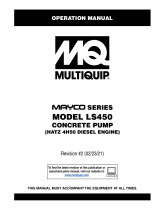 MQ Multiquip LS450 Operating instructions
MQ Multiquip LS450 Operating instructions
-
 MQ Multiquip LS450 Operating instructions
MQ Multiquip LS450 Operating instructions
-
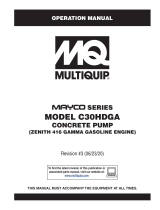 MQ Multiquip C30HDGA Operating instructions
MQ Multiquip C30HDGA Operating instructions
-
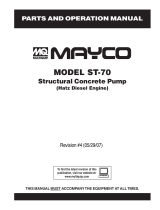 MQ Multiquip ST70 Operating instructions
MQ Multiquip ST70 Operating instructions
-
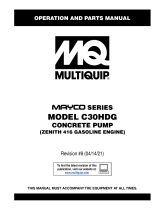 MQ Multiquip C30HDG Operating instructions
MQ Multiquip C30HDG Operating instructions
-
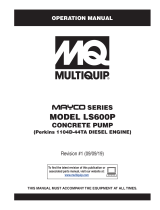 MQ Multiquip LS-600P Operating instructions
MQ Multiquip LS-600P Operating instructions
-
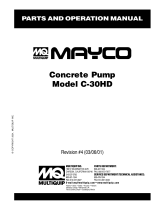 MQ Multiquip C30HD User manual
MQ Multiquip C30HD User manual
-
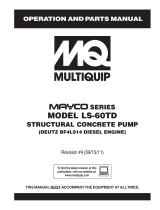 MQ Multiquip LS60TD Operating instructions
MQ Multiquip LS60TD Operating instructions
-
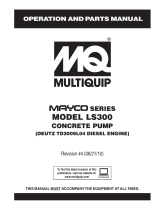 MQ Multiquip LS300 Operating instructions
MQ Multiquip LS300 Operating instructions
-
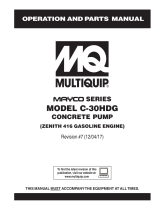 MQ Multiquip C30HDG Operating instructions
MQ Multiquip C30HDG Operating instructions
Other documents
-
Allied Brass PB-26G-GYM Specification
-
Allied Brass CV-26D-PEW Specification
-
Allied Brass PB-26D-WHM Dimensions Guide
-
Allied Brass PB-26G-GYM Specification
-
Allied Brass PB-26-BKM Dimensions Guide
-
Allied Brass CV-26T-BBR Dimensions Guide
-
Apex ADPT-637 User manual
-
BENDIX TCH-003-024 User manual
-
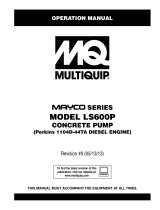 MULTIQUIP LS600P User manual
MULTIQUIP LS600P User manual
-
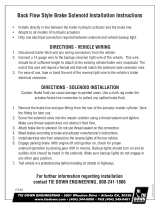 Tie Down Backing Solenoid for Item# 124964 Owner's manual
Tie Down Backing Solenoid for Item# 124964 Owner's manual















































































































































